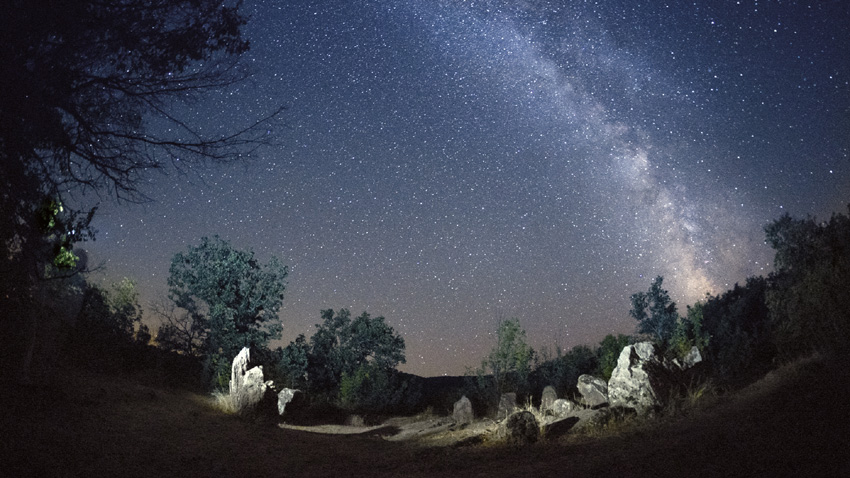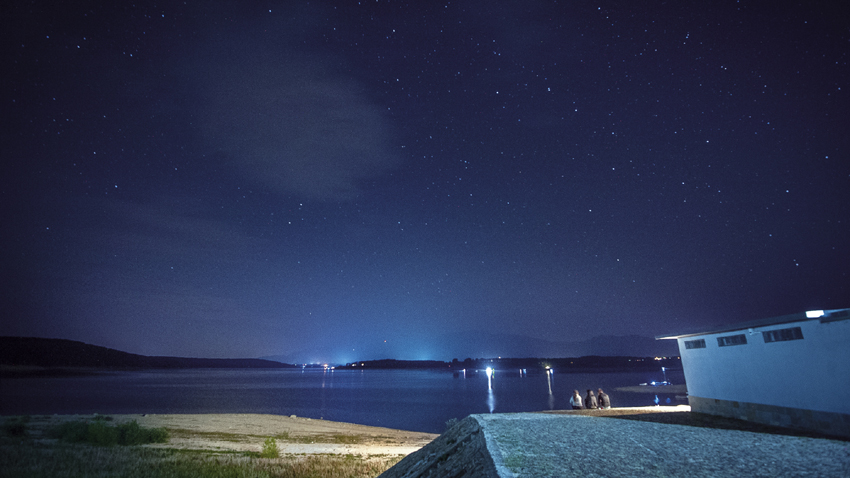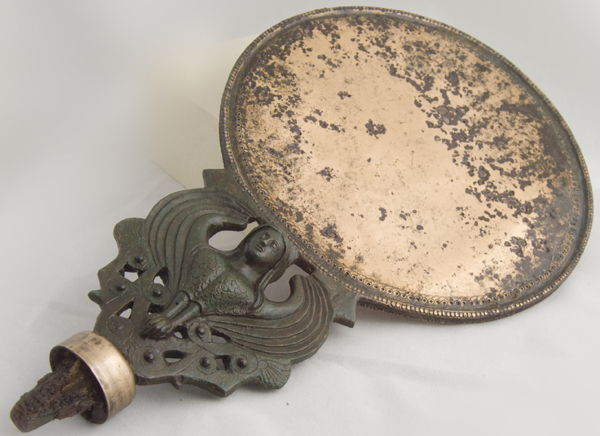This is the provocative question we put to one of the authors of the magnificent album A Guide to Thracian Bulgaria. Her name is Dimana Trankova and she is an archaeologist. But for a long time her career has been with one of the few foreign language publishers in Bulgaria - Vagabond Media - as is the case with another one of the album's authors, Anthony Georgieff. Next week we shall present another one of the albums published by Vagabond - Roman Bulgaria.

But to go back to Dimana's answer to the question “Is there anything more precious than Thracian gold?” it is a brief one: the information about anything Thracian - artifacts, remains - gives us an idea of what our ancestors were like, because they have left no written record. Unless we take the superb tomb decorations - though they are from a later period than the Egyptian ones - to be pictograms. The album presents fortresses in places one wouldn't think possible - above the Lion's head near Ropotamo River, as well as sanctuaries such as Belintash. And more: dolmens - known as “dragon dens” which ancient Bulgarians believed to be the homes of dragons - which were then destroyed to consolidate farmland, as well as Stonehenge-like rocks arranged in a circle, whose purpose remains a mystery.

“This book sets itself an ambitious goal - to explain, in English, to people who know absolutely nothing about the Thracians where they came from, what their lives were like, what gods they believed in, what kind of towns they built, which were their most precious treasures and why they loved gold artifacts so much. The Thracians have left us two sites which are on the UNESCO world heritage list (the Kazanluk and the Sveshtari tombs) and one that is on the UNESCO intangible cultural heritage list - the “nestinari” who walk on live embers”, Dimana Trankova explains.
 And as anything that takes us back into the mists of time, there are many things that are subject to interpretation and unequivocal facts are few and far between. Even something small like a silver mirror raises the question whether a mirror is just a mirror or whether it was imbued with a deeper meaning:
And as anything that takes us back into the mists of time, there are many things that are subject to interpretation and unequivocal facts are few and far between. Even something small like a silver mirror raises the question whether a mirror is just a mirror or whether it was imbued with a deeper meaning:
“It could have had magical functions and symbolized part of the history of Dionysus who was dismembered by the Titans. One of the things the Titans lured him with was a mirror. The story of reincarnation has its deep Thracian roots and the mirror is just one of its symbols.”
There is a distinct connection between Thracian and Greek culture. The widespread belief is that Dionysus was a Thracian, whom the Greeks abducted, though that is not so important - each of the two adjoining cultures influenced the other. As to whether Thracian symbols, at least the principal ones, were transformed into Christian symbols, there can be no doubt on that point. The Mother-Goddess became Saint Marina, one of the most deeply revered saints in the region of Strandja, a Bulgarian mountain where the beliefs of the ancient Thracians are particularly prominent. Again in Strandja, close to Malko Turnovo, we find another:
“In some churches there you can see St. George, though not as an icon, but as a bas-relief of a Thracian horseman. Obviously the people who built the church chanced upon a Thracian sanctuary and said to themselves: Look, there's St. George!”
 The book's jacket shows the sun rising over Harman Kaya, a sanctuary in the Rhodopes, next to which there is a Muslim sanctuary. There is one more such place with Demir Baba Teke next to the Sveshtari sanctuary. But even if rocks or other elements of Thracian sanctuaries were later used by subsequent religions, the belief in nature, fire, in mystic creatures was still rife among the people. When planning a tour of “Thracian” Bulgaria it would be good to know that, with the exception of Sveshtari (which is part of Sboryanovo archaeological reserve) and the museum in Vratsa, the most interesting landmarks are in fact in its Southern portion.
The book's jacket shows the sun rising over Harman Kaya, a sanctuary in the Rhodopes, next to which there is a Muslim sanctuary. There is one more such place with Demir Baba Teke next to the Sveshtari sanctuary. But even if rocks or other elements of Thracian sanctuaries were later used by subsequent religions, the belief in nature, fire, in mystic creatures was still rife among the people. When planning a tour of “Thracian” Bulgaria it would be good to know that, with the exception of Sveshtari (which is part of Sboryanovo archaeological reserve) and the museum in Vratsa, the most interesting landmarks are in fact in its Southern portion.
“I picked up this book from a store in Sofia during a brief visit - judging by the many megalithic structures and tombs described here, I need to go back and see more of Bulgaria!” writes one reader, Kimberly Crago in Amazon.
English version: Milena Daynova
For the first time in Sofia, the British show STOMP will perform in Hall 1 of the National Palace of Culture (NDK) from 8 to 10 November 2024. The show, which combines dance, music and theatre, will present its infectious blend of rhythm, drama and..
A protest is being held tonight in front of the Ivan Vazov National Theatre against the premiere of the play Arms and the Man by Bernard Shaw, staged by John Malkovich , which will open at 7 p.m. "This play should not be staged at the National..
A Bulgarian production company will build a new film center worth EUR 15 million in the Sofia-Bozhurishte Industrial Park. The film center will span over 30,000 square meters. The contract for the sale of the land will be signed at the end of..
The fourth national Biennial of Illustrations opens today in the triangular tower of Serdica, part of the Regional Museum of History in Sofia. As..

+359 2 9336 661
